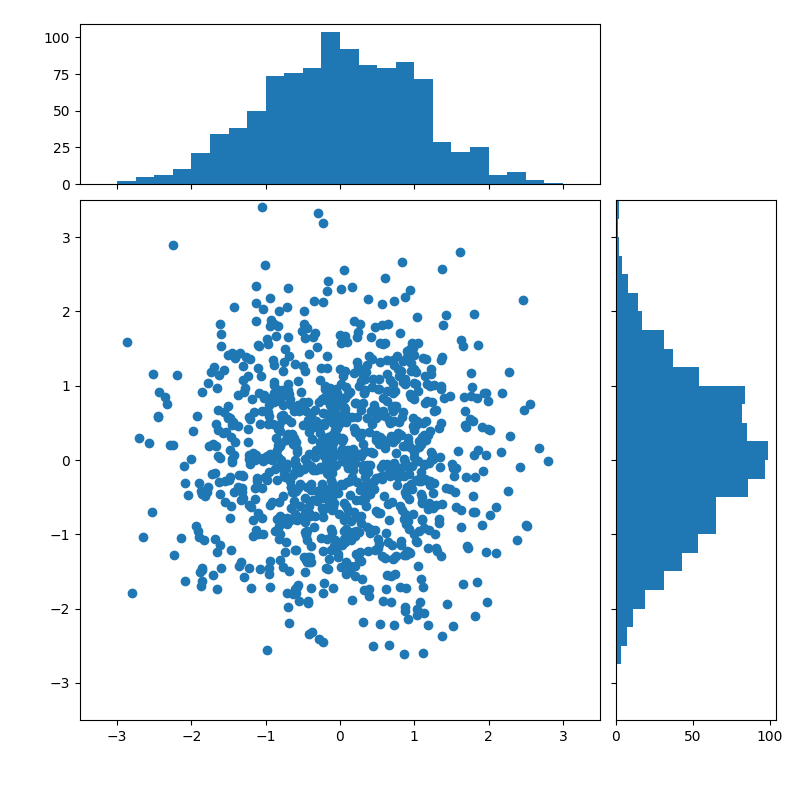
(Source code, png, pdf)

import numpy as np
import matplotlib.pyplot as plt
from matplotlib.ticker import NullFormatter
# the random data
x = np.random.randn(1000)
y = np.random.randn(1000)
nullfmt = NullFormatter() # no labels
# definitions for the axes
left, width = 0.1, 0.65
bottom, height = 0.1, 0.65
bottom_h = left_h = left + width + 0.02
rect_scatter = [left, bottom, width, height]
rect_histx = [left, bottom_h, width, 0.2]
rect_histy = [left_h, bottom, 0.2, height]
# start with a rectangular Figure
plt.figure(1, figsize=(8, 8))
axScatter = plt.axes(rect_scatter)
axHistx = plt.axes(rect_histx)
axHisty = plt.axes(rect_histy)
# no labels
axHistx.xaxis.set_major_formatter(nullfmt)
axHisty.yaxis.set_major_formatter(nullfmt)
# the scatter plot:
axScatter.scatter(x, y)
# now determine nice limits by hand:
binwidth = 0.25
xymax = np.max([np.max(np.fabs(x)), np.max(np.fabs(y))])
lim = (int(xymax/binwidth) + 1) * binwidth
axScatter.set_xlim((-lim, lim))
axScatter.set_ylim((-lim, lim))
bins = np.arange(-lim, lim + binwidth, binwidth)
axHistx.hist(x, bins=bins)
axHisty.hist(y, bins=bins, orientation='horizontal')
axHistx.set_xlim(axScatter.get_xlim())
axHisty.set_ylim(axScatter.get_ylim())
plt.show()
Keywords: python, matplotlib, pylab, example, codex (see Search examples)